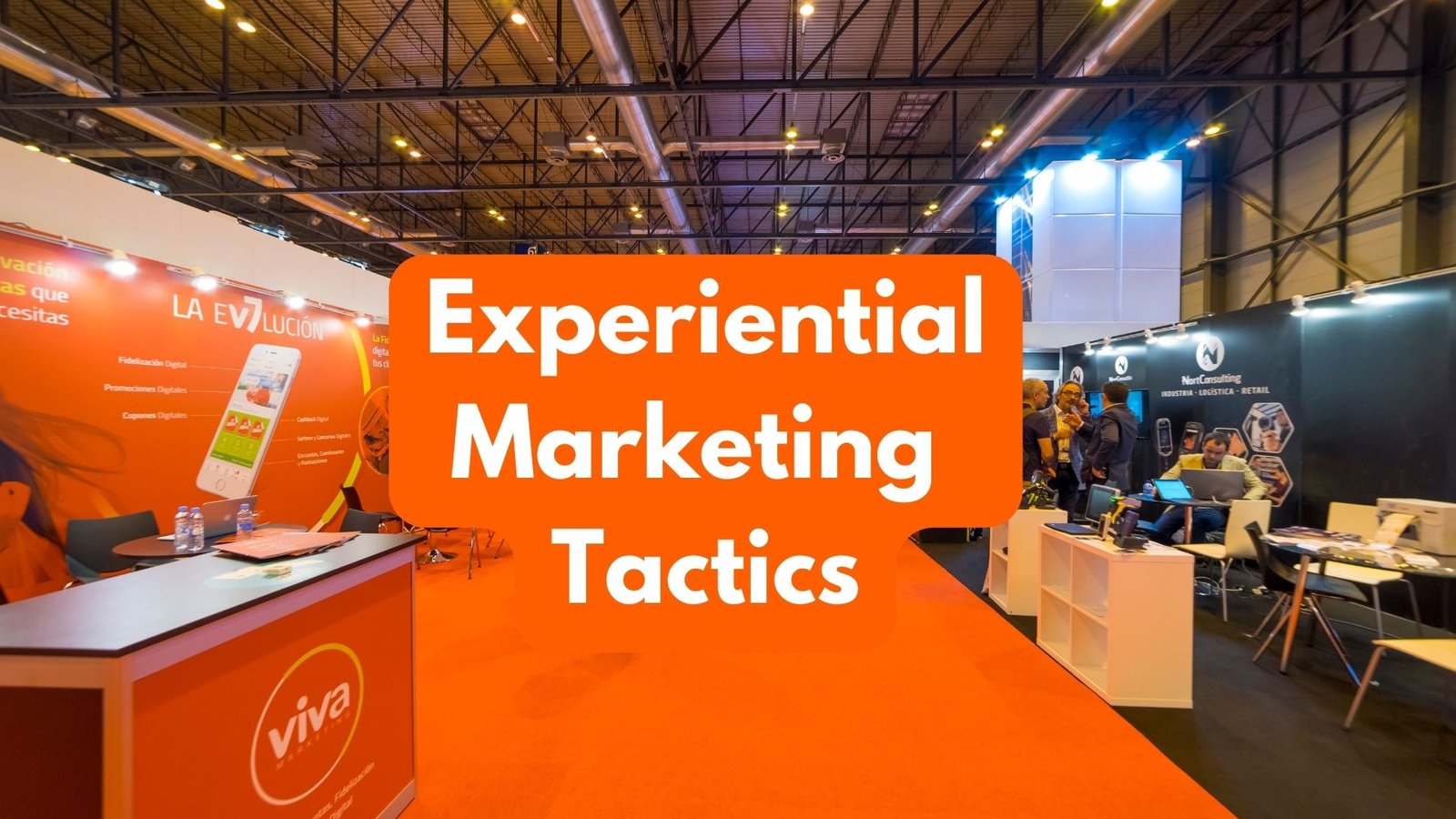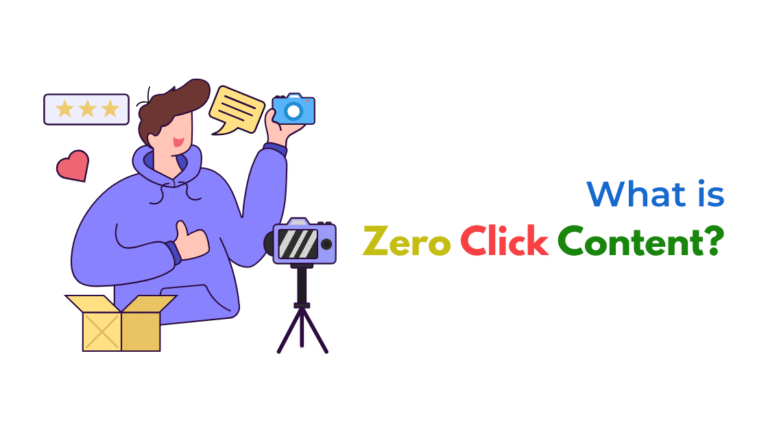Have you considered how experiential marketing can create memorable experiences that make your brand go viral on social media?
In today’s competitive digital landscape, brands need to find unique ways to engage their audience and stand out.
By creating memorable, immersive experiences, brands can connect with consumers in meaningful ways.
In this blog, we’ll explore five experiential marketing tactics that will make your brand go viral on social media and how to create viral brand experiences.
Let us also understand how to leverage social media for experiential marketing.
What is Experiential Marketing?
Experiential marketing, also widely recognized as engagement marketing, is a proactive approach that immerses consumers in direct, interactive experiences with a brand.
This strategic marketing discipline is centered around facilitating actual consumer engagements, leveraging events such as live demonstrations, pop-up shops, and innovative uses of virtual (VR) and augmented reality (AR) technologies.
The core aim is to deepen the consumer’s relationship with the brand, transforming conventional advertising into memorable, participatory moments.
These moments are crafted not just to be experienced but shared widely across social media platforms, multiplying their impact.
Identifying What Is Not Experiential Marketing
Understanding experiential marketing does not help to underscore its unique aspects compared to traditional marketing approaches. Let’s check out some live examples!
1. Traditional Advertising:
Example: A television commercial promoting a new smartphone.
- Why It’s Not Experiential: This form of marketing, often referred to as “broadcast advertising,” relies solely on visual and auditory messages that lack the interactive, engaging element central to experiential marketing. Viewers passively receive the information without any direct interaction or immersive experience with the product.
2. Standard Promotions and Discounts:
Example: A store offering a 20% discount on all items during a holiday sale.
- Why It’s Not Experiential: While these promotions can draw attention and improve sales, they do not provide a unique brand experience or foster meaningful connections with consumers. The focus here is on “price reductions” rather than engaging customers memorably.
3. Static Display Ads:
Example: Billboard advertising of offers on Burger.
- Why It’s Not Experiential: Such ads are static and non-interactive, serving only to inform or remind the viewer about a product. There’s no opportunity for the audience to experience the brand in a tangible manner.
4. Digital Pop-Up Ads:
Example: An online pop-up ad encouraging users to subscribe to a digital newsletter.
- Why It’s Not Experiential: Although slightly more engaging than static ads due to their interactive nature (e.g., requiring a click to close), digital pop-ups do not offer real-life experiences or deeper engagement with the product or service. These ads are often viewed as intrusive rather than inviting.
5. Purely Informational Content:
Example: A blog post detailing the features of a new kitchen gadget without any interactive elements or hands-on experience offered.
- Why It’s Not Experiential: Informative content is essential for consumer education. Without interactive elements that allow consumers to physically or virtually experience the product, it remains purely informational.
Why is Experiential Marketing Important Today?
In today’s social media-driven world, creating shareable experiences has become essential for brands looking to stand out.
You must be wondering how to engage consumers with interactive marketing!
To break through the noise, brands need to offer something unique and memorable.
Here are some benefits of experiential marketing for businesses.
Shareable Experiences Drive Engagement
Experiential marketing creates immersive, interactive experiences that consumers want to share.
Visually appealing and emotionally engaging events prompt social media posts, generating organic content that boosts brand visibility and reach. This sharing can lead to viral moments, rapidly increasing brand awareness.
Capturing Consumer Attention
With so many ads, getting people’s attention needs creative methods.
Experiential marketing cuts through the clutter by offering unique experiences, such as well-designed pop-up shops or interactive VR experiences.
These memorable events make consumers more likely to remember and talk about the brand and can be considered as (interactive marketing ideas for events.)
Creating Emotional Connections
Experiential marketing builds emotional connections by engaging multiple senses and providing memorable interactions.
These connections drive consumer loyalty and advocacy, making people more likely to become repeat customers and recommend the brand to others.
Enhancing Social Media Strategy
Integrating experiential marketing into a brand’s social media strategy amplifies its effectiveness.
Using targeted hashtags, live streaming events, and encouraging user-generated content increases visibility and engagement, building a community of engaged followers.
5 Experiential Marketing tactics for social media to Make Your Brand Go Viral
Below are some examples of successful experiential marketing campaigns:
1. Immersive Pop-Up Experiences for Brands
Creating Buzz with Temporary Installations
Pop-up experiences are a fantastic way to create a sense of urgency and excitement around your brand.
These temporary installations can be designed to provide an immersive, hands-on experience that encourages social sharing.
IKEA’s “Dining Club” pop-up in London allowed customers to cook their own meals in a kitchen designed with IKEA products.
This interactive experience gave participants a hands-on opportunity to engage with the brand in a personal and memorable way.
The event was highly shareable, with many participants posting about their experiences on social media. More details can be found in the echochamber.
Why It Works:
- Exclusivity and FOMO: Limited-time events create a fear of missing out (FOMO) that drives foot traffic and social media engagement.
- Photo-Worthy Moments: Design elements that encourage visitors to take and share photos increase organic reach.
Tips for Success:
- Collaborate with influencers to amplify reach.
- Use branded hashtags to track and boost social media activity.
2. Augmented Reality (AR) Experiences
Enhancing Engagement with Technology
Integrating augmented reality (AR) marketing campaigns into your experiential marketing campaigns can create highly engaging and shareable experiences.
AR allows brands to create immersive environments where consumers can interact with digital elements in real-world settings.
For instance, Coca-Cola’s FIFA World Cup VR Experience allowed fans to immerse themselves in a virtual stadium, creating memorable and shareable moments.
This innovative approach captivated audiences and enhanced the overall fan experience. You can read more about this at Campaigns of the World.
Why It Works:
- Innovation: AR offers a novel experience that attracts attention.
- Interactivity: Users engage deeply with your brand, leading to higher retention and recall.
Tips for Success:
- Ensure the AR experience is seamless and user-friendly.
- Promote the AR experience across all marketing channels.
3. User-Generated Content (UGC) Campaign Tips
Leveraging the Power of Your Audience
Encouraging your audience to create content around your brand can significantly boost your visibility.
User-generated content (UGC) campaigns rely on the authenticity and creativity of your consumers.
A prime example is Apple’s #ShotOniPhone campaign, where users share high-quality photos taken with their iPhones, showcasing the product’s capabilities while generating massive social media buzz.
This campaign not only highlighted the quality of the iPhone’s camera but also engaged users by making them part of the brand story. More details can be found here at The Brand Hopper.
Why It Works:
- Authenticity: UGC is perceived as more trustworthy than brand-generated content.
- Community Building: Engages your audience and fosters a sense of community.
Tips for Success:
- Provide clear guidelines for UGC submissions.
- Offer incentives like contests or features on your official page.
4. Live Experiences and Events
Creating Real-Time Connections
Hosting live events such as concerts, product launches, or interactive workshops can generate significant social media activity.
Live events offer a unique opportunity for brands to create real-time connections with their audience.
Red Bull’s Stratos event, which involved a record-breaking skydive streamed live on YouTube, is a testament to the power of live experiences.
This event captivated millions of viewers and generated widespread media coverage, significantly boosting Red Bull’s brand visibility.
You can use such live events marketing strategies to make your brand go viral.
Learn more about the Stratos event here at The Brand Hopper.
Why It Works:
- Real-Time Engagement: Live events create a sense of immediacy and excitement.
- High Shareability: Audiences are likely to share live content, increasing visibility.
Tips for Success:
- Use live streaming platforms to broadcast events.
- Engage with your audience during the event through Q&A sessions or live polls.
5. Promoting Social Causes
Aligning with Social Causes
Aligning your brand with a social cause can create powerful emotional connections with your audience.
Cause-driven marketing campaigns resonate deeply with consumers by demonstrating the brand’s commitment to important issues.
Lean Cuisine’s #WeighThis campaign focused on celebrating women’s accomplishments beyond their weight, shifting the conversation from dieting to self-worth.
This campaign not only aligned with the brand’s values but also engaged a broad audience in meaningful dialogue.
This is one of the most significant social cause experiential marketing example.
Additional insights into this campaign can be found here at Nestle.
Why It Works:
- Emotional Resonance: Campaigns tied to social causes can foster deep emotional connections.
- Positive Brand Image: Demonstrates your brand’s commitment to important issues.
Tips for Success:
- Choose a cause that aligns with your brand values.
- Use storytelling to highlight the impact of your campaign.
Conclusion
In conclusion, implementing effective experiential marketing tactics can significantly enhance your brand’s visibility and engagement on social media, potentially making your campaigns go viral while creating memorable brand experiences.
Socinova enhances your brand’s visibility and engagement through experiential marketing by creating immersive experiences, leveraging influencers, and utilizing interactive technologies to make your campaigns memorable and shareable.
Tactics such as creating immersive experiences that resonate emotionally with audiences, leveraging influencers to amplify your message, and engaging participants through interactive technologies are crucial.
This blog is written by Tejas Lokhande from Socinova. The images have their copyrights from respective resources.




